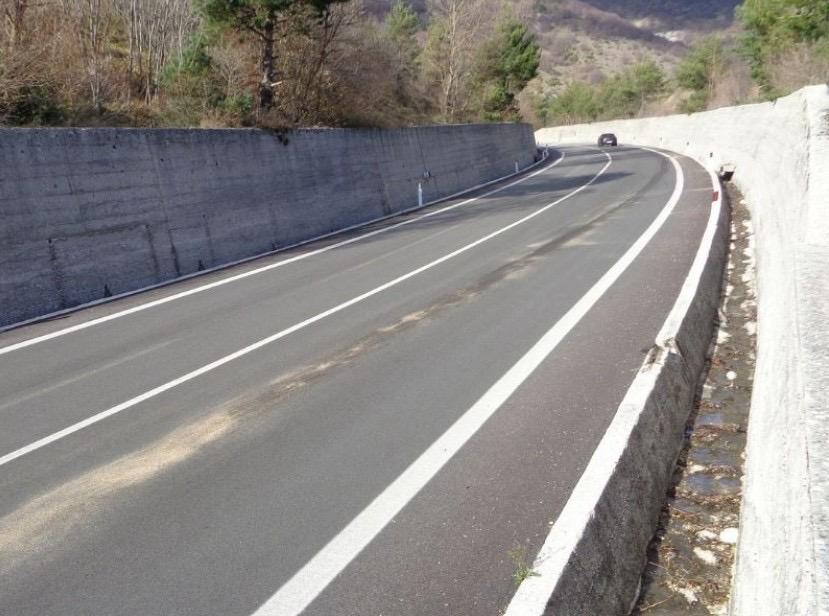The Abruzzo Region has funded a project for a park along the SS17 road between Castel di Sangro and Roccaraso, to protect wildlife—in particular the Marsican brown bear—and reduce the risk of accidents.
€2 million from the ERDF 2021–27 program for a major innovative road ecology project: a 6 km long metal barrier along a state road, designed according to international standards, to prevent animals from accessing the roadway and guide them towards safe passages.
The goal is to complete and enhance the work already begun in collaboration between the Park, WWF, and Salviamo l’Orso in 2022, which unfortunately did not prevent Carrito from being hit by a car in 2023.
The project represents a concrete step that not only catches off guard all those who often talk but then fail to act, but also demonstrates how the PNALM is now fully aligned with our vision and with the real needs of a species, such as the Marsican brown bear, which is expanding outside the park’s territories.
We thank Abruzzo Park for its generosity in proposing a solution to a serious problem for the species albeit far from its borders, when it could have spent this money quietly on its own territory.
Work will start in spring 2026.
For Carrito, and for everyone we can help save from now on.
> Following is the Press Release of the Abruzzo, Lazio and Molise National Park in its entirety
“The resolution by which the Abruzzo Region approved the project submitted last summer for the safety of the section of State Highway 17 between Castel di Sangro and Roccaraso is of recent days.
The Park project, with a total amount of 2 million euros, is part of the ERDF 2021-27 program on the intervention “Protection of Biodiversity and Improvement of Natural Ecosystems, Strengthening of Ecological Connections,” to which the Region has allocated as much as 8.5 million euros of European funds, showing great sensitivity and attention as the vice president of the Abruzzo Regional Council with responsibility for Parks and the Environment himself said, Emanuele Imprudente “In a territory like Abruzzo, which is protected for more than 35 percent of its total area, thanks to European funds we have made available to the parks concrete resources and tools to protect and enhance our natural heritage, first and foremost the Marsican brown bear, and harmonize the relationship between man and nature.” Sincere thanks are due to the Region and Vice President Imprudente for an important choice, at a very delicate time for the conservation of species and habitats.
The Park has taken up yet another challenge, allocating all its resources to an area outside its borders, but extremely delicate and fundamental to the challenge of expansion and therefore long-term conservation of the Marsican brown bear population. The stretch of Highway 17 is the one where two bears, including Carrito, died between December 2019 and January 2023, and where other, fortunately, non-fatal incidents had occurred previously, however.
Once again we went beyond our borders and especially beyond our administrative competencies, but we seized the important opportunity made available by the Abruzzo Region, in a logic of coordination between institutions committed to the protection of species and habitats.
The area chosen for the intervention is among the most delicate and sensitive because it is located along the corridor of expansion of the Marsican bear population, from the core area of the National Park of Abruzzo, Lazio and Molise, to that of the Maiella National Park, where the presence of bears has been gradually increasing over the past decades, confirming that the “protected area system” in Abruzzo works well, as long as we have the good sense and intelligence to be able to wait for Nature’s time and take concrete measures for protection at the same time.
The planned intervention includes the construction of a wire mesh barrier parallel to the road axis, designed in accordance with international criteria, so as to ensure the impossibility for animals to access the road, which is one of the busiest arterial roads in the central Apennines given that it represents one of the main axes connecting the Tyrrhenian and Adriatic seas. The wire mesh barrier will, of course, be constructed to connect the many points where animals can safely cross the state highway, namely the part above the tunnels on the road section, one of which is more than 1,000 meters long. Basically, the famous “ecological corridors” that many people invoke, but without really knowing what they are about.
The new structure will also be linked to the previous intervention, carried out by the Park with funds from the Life Safe Crossing project and with the indispensable support of the Salviamo l’Orso and WWF Italia Associations, which made it possible to secure another stretch of the same state highway, where a female bear had died in 2019. That intervention, contrary to the improper claims of many improvised pseudo-experts, had worked all right, being inaccessible, albeit carried out with techniques not exactly in line with international principles due to a lack of funds. Carrito, in fact, on the evening he was run over and killed, had arrived on the metal fence, skirting it perimeterally until, having finished the same, he jumped onto the roadway at a point where, moreover, there is the junction of a municipal road, and therefore where it will be necessary to find an alternative solution to the fence, not being able, of course, to obstruct the passage to vehicles. Therefore, the new project will make it possible to complete the intervention, which was limited at the time due to lack of funds, and extend it to a stretch about 6 kilometers long in total, thanks precisely to the Region’s measure.
Finally, it is important to point out that the preliminary project drawn up by the Park has been shared by ANAS, which is responsible for the management of the arterial road and with which the Park will obviously take care of the elaboration of the executive project, so as to carry out an intervention in line both with international safety standards for fauna and with those provided by the Highway Code. In this regard, work will be carried out to evaluate the adoption of suitable measures near the junctions of secondary roads where, as mentioned, it is not possible to install metal fences.
The start of the work is scheduled for spring 2026, also because in winter it would be practically impossible to work, while the end is expected by autumn of the same year.”


